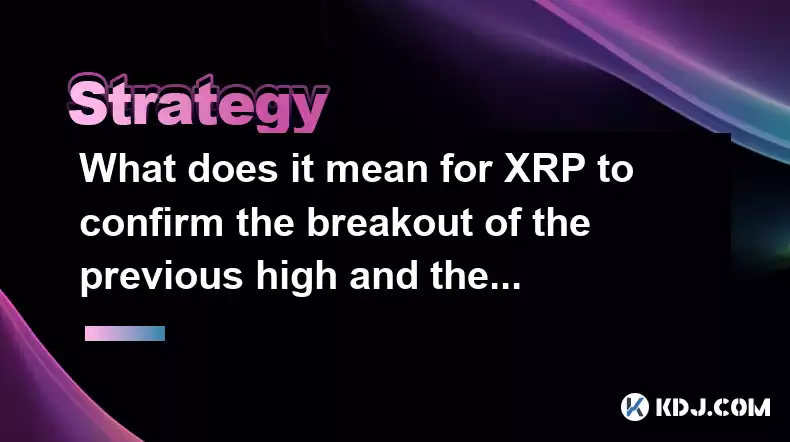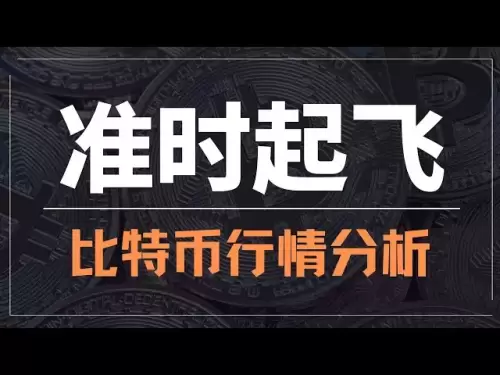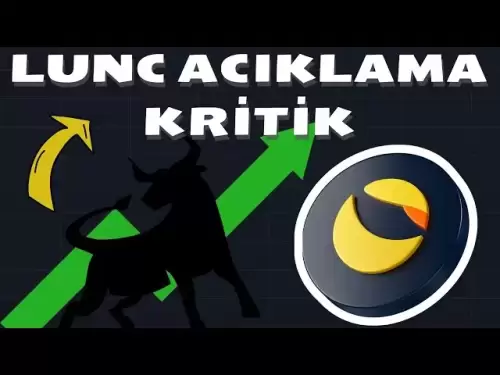-
 Bitcoin
Bitcoin $116800
1.37% -
 Ethereum
Ethereum $3832
5.15% -
 XRP
XRP $3.063
2.69% -
 Tether USDt
Tether USDt $1.000
0.04% -
 BNB
BNB $774.1
0.84% -
 Solana
Solana $170.7
1.56% -
 USDC
USDC $0.0000
0.01% -
 Dogecoin
Dogecoin $0.2142
5.31% -
 TRON
TRON $0.3406
1.90% -
 Cardano
Cardano $0.7635
3.81% -
 Hyperliquid
Hyperliquid $39.55
2.42% -
 Sui
Sui $3.732
7.71% -
 Stellar
Stellar $0.4127
4.25% -
 Chainlink
Chainlink $17.80
6.91% -
 Bitcoin Cash
Bitcoin Cash $576.7
1.66% -
 Hedera
Hedera $0.2521
3.28% -
 Ethena USDe
Ethena USDe $1.001
0.01% -
 Avalanche
Avalanche $22.66
2.19% -
 Litecoin
Litecoin $121.3
2.98% -
 UNUS SED LEO
UNUS SED LEO $8.959
-0.31% -
 Toncoin
Toncoin $3.325
2.88% -
 Shiba Inu
Shiba Inu $0.00001263
2.84% -
 Uniswap
Uniswap $10.11
4.79% -
 Polkadot
Polkadot $3.769
3.22% -
 Dai
Dai $1.000
0.01% -
 Bitget Token
Bitget Token $4.413
1.46% -
 Monero
Monero $272.9
-4.98% -
 Cronos
Cronos $0.1488
4.22% -
 Pepe
Pepe $0.00001088
4.01% -
 Aave
Aave $273.0
4.73%
What does it mean for XRP to confirm the breakout of the previous high and then step back?
When XRP confirms a breakout above a previous high and then steps back, it may signal a buying opportunity if the price remains above the breakout level.
Apr 19, 2025 at 04:42 am

What does it mean for XRP to confirm the breakout of the previous high and then step back?
In the world of cryptocurrency, technical analysis plays a crucial role in understanding market movements and potential future trends. One specific scenario that traders and investors often analyze is when a cryptocurrency, such as XRP, confirms the breakout of a previous high and then steps back. This article will delve into the meaning of this occurrence, its implications, and how traders might respond to such a situation.
Understanding Breakouts and Previous Highs
A breakout in the context of cryptocurrency trading refers to when the price of an asset moves above a resistance level, which is often a previous high. A previous high is the highest price point that the asset reached in a specific timeframe. When XRP breaks above this level, it is considered a confirmation of the breakout. This event can signal to traders that the asset may continue to rise, potentially entering a bullish trend.
The Significance of Confirming a Breakout
When XRP confirms a breakout of a previous high, it indicates strong buying pressure and positive market sentiment. This breakout confirmation can be seen as a signal that the market believes in the potential for further price increases. Traders often look for such confirmations to validate their bullish outlook and may use this as a trigger to enter or add to their positions.
The Step Back Phenomenon
After confirming a breakout, it is not uncommon for XRP to experience what is known as a step back or a pullback. A step back occurs when the price retraces from its new high but remains above the previous resistance level. This retracement can be due to profit-taking by traders who entered the market at lower prices or a natural market correction after a rapid increase.
Analyzing the Step Back
The step back after a breakout can be analyzed in several ways. It is important to determine whether the step back is a minor correction or a sign of a potential reversal. Traders often look at the following factors:
- Volume: High trading volume during the breakout and subsequent step back can indicate strong market interest.
- Support Levels: If the price remains above key support levels, it suggests that the bullish trend may continue.
- Technical Indicators: Tools like moving averages, RSI, and MACD can help traders assess the strength of the step back and potential future movements.
Trading Strategies Following a Step Back
Traders may employ various strategies when XRP confirms a breakout and then steps back. Here are some common approaches:
- Buying the Dip: Some traders see the step back as an opportunity to buy XRP at a slightly lower price, anticipating that the bullish trend will resume.
- Setting Stop-Losses: To manage risk, traders might set stop-loss orders below the new support level established after the breakout.
- Waiting for Confirmation: Other traders may wait for the price to break above the recent high again before entering a new position, seeking further confirmation of the bullish trend.
Psychological Impact on Traders
The confirmation of a breakout followed by a step back can have a significant psychological impact on traders. The initial breakout can boost confidence and lead to a fear of missing out (FOMO), encouraging more buying. However, the subsequent step back can create uncertainty and fear, prompting some traders to sell and take profits. Understanding these psychological factors is crucial for making informed trading decisions.
Technical Analysis Tools for Monitoring Breakouts and Step Backs
To effectively monitor breakouts and step backs, traders often use various technical analysis tools. Here are some commonly used tools:
- Candlestick Charts: These charts provide detailed information about price movements and can help identify breakouts and step backs.
- Trend Lines: Drawing trend lines can help traders visualize the breakout and subsequent step back.
- Moving Averages: These can smooth out price data to identify trends and potential reversals.
- Bollinger Bands: These bands can indicate volatility and potential breakout points.
Real-Life Example of XRP Breakout and Step Back
To illustrate the concept, let's consider a hypothetical scenario involving XRP. Suppose XRP reaches a previous high of $0.50 and then breaks above this level to reach $0.55. This breakout is confirmed by high trading volume and positive market sentiment. However, after reaching $0.55, XRP steps back to $0.52, remaining above the previous high of $0.50.
In this scenario, traders might interpret the step back as a minor correction and look for signs that the bullish trend will continue. They may monitor the price closely, watching for a move back above $0.55 or a drop below $0.50, which could signal a change in market direction.
Importance of Risk Management
Regardless of the signals provided by breakouts and step backs, risk management remains a critical aspect of trading. Traders should always set stop-loss orders and only risk what they can afford to lose. Proper risk management can help mitigate potential losses during periods of market volatility.
Frequently Asked Questions
Q: How can I identify a confirmed breakout in XRP?
A: To identify a confirmed breakout in XRP, look for the price to move above a previous high with significant trading volume. Additionally, technical indicators like moving averages and RSI can provide further confirmation of the breakout.
Q: What should I do if XRP steps back after a breakout?
A: If XRP steps back after a breakout, consider your trading strategy. You might choose to buy the dip if you believe the bullish trend will continue, set a stop-loss to manage risk, or wait for further confirmation of the trend before entering a new position.
Q: How can I use technical indicators to analyze a step back in XRP?
A: Use technical indicators like moving averages to identify trends, RSI to assess overbought or oversold conditions, and MACD to spot potential reversals. These tools can help you understand the strength and potential direction of the step back.
Q: What psychological factors should I consider when trading XRP after a breakout and step back?
A: Be aware of emotions like fear of missing out (FOMO) during the breakout and fear or uncertainty during the step back. Managing these psychological factors can help you make more rational trading decisions.
Disclaimer:info@kdj.com
The information provided is not trading advice. kdj.com does not assume any responsibility for any investments made based on the information provided in this article. Cryptocurrencies are highly volatile and it is highly recommended that you invest with caution after thorough research!
If you believe that the content used on this website infringes your copyright, please contact us immediately (info@kdj.com) and we will delete it promptly.
- Ripple, Rail, and Stablecoin Payments: A $200M Power Play
- 2025-08-07 22:50:12
- Punisher Coin Presale: The Next $Trump? Aiming for 100x Gains!
- 2025-08-07 22:50:12
- Riding the Crypto Wave: Presale Cryptos, Cold Wallets, and the BTC Bull Run
- 2025-08-07 23:10:12
- Crypto's Wild Ride: Punisher Coin, Popcat, and the Meme Coin Mania
- 2025-08-07 23:10:12
- Bitcoin Price, XRP Prediction, Cryptocurrency: Navigating the Wild West of Digital Assets
- 2025-08-07 23:15:12
- WiMi, Quantum Computing, and AR Tech: Navigating the Future Today
- 2025-08-07 22:30:12
Related knowledge

How to avoid common crypto investment mistakes?
Jul 13,2025 at 01:35am
Understanding the Risks of Crypto InvestmentInvesting in cryptocurrency can be highly rewarding, but it also comes with significant risks. One of the ...

What is a long-short crypto strategy?
Jul 15,2025 at 10:56am
Understanding the Basics of a Long-Short Crypto StrategyA long-short crypto strategy is an investment approach where traders simultaneously take long ...

What is a long-short crypto strategy?
Jul 11,2025 at 01:28pm
Understanding the Basics of Long-Short Crypto StrategyA long-short crypto strategy is an investment approach where traders take both long and short po...

How to use the RSI indicator for crypto?
Jul 12,2025 at 03:56pm
Understanding the RSI Indicator in Cryptocurrency TradingThe Relative Strength Index (RSI) is a momentum oscillator used to measure the speed and chan...

Is copy trading a good strategy for crypto beginners?
Jul 12,2025 at 08:28am
Understanding Copy Trading in the Cryptocurrency MarketCopy trading is a strategy where novice traders replicate the trades of experienced investors a...

How to build a crypto portfolio with $1000?
Jul 13,2025 at 08:14pm
Understanding the Basics of Cryptocurrency InvestmentBuilding a crypto portfolio with $1000 starts with understanding the fundamentals of cryptocurren...

How to avoid common crypto investment mistakes?
Jul 13,2025 at 01:35am
Understanding the Risks of Crypto InvestmentInvesting in cryptocurrency can be highly rewarding, but it also comes with significant risks. One of the ...

What is a long-short crypto strategy?
Jul 15,2025 at 10:56am
Understanding the Basics of a Long-Short Crypto StrategyA long-short crypto strategy is an investment approach where traders simultaneously take long ...

What is a long-short crypto strategy?
Jul 11,2025 at 01:28pm
Understanding the Basics of Long-Short Crypto StrategyA long-short crypto strategy is an investment approach where traders take both long and short po...

How to use the RSI indicator for crypto?
Jul 12,2025 at 03:56pm
Understanding the RSI Indicator in Cryptocurrency TradingThe Relative Strength Index (RSI) is a momentum oscillator used to measure the speed and chan...

Is copy trading a good strategy for crypto beginners?
Jul 12,2025 at 08:28am
Understanding Copy Trading in the Cryptocurrency MarketCopy trading is a strategy where novice traders replicate the trades of experienced investors a...

How to build a crypto portfolio with $1000?
Jul 13,2025 at 08:14pm
Understanding the Basics of Cryptocurrency InvestmentBuilding a crypto portfolio with $1000 starts with understanding the fundamentals of cryptocurren...
See all articles

























































































